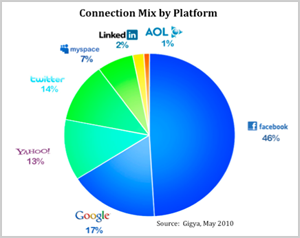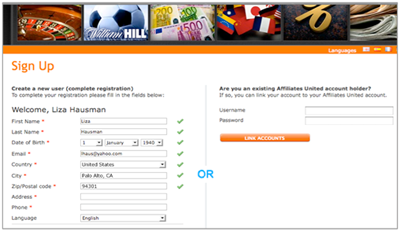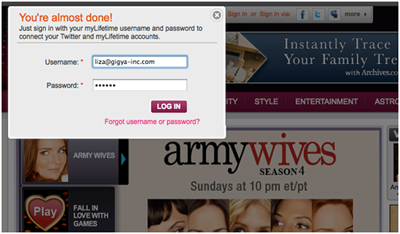June/Jul 2010
Applying Social Identity: 5 Best Practices
by Liza Hausman, Vice President, Marketing, Gigya, Inc.
Enabling constituents to register using an existing identity from Facebook, Twitter, Yahoo or another provider is one of the most powerful registration tools to emerge in the last few years. Registering people through an established online identity not only streamlines the registration process, but also gives your nonprofit a head start on building deeper relationships with them.
To ensure the best possible user experience, consider these best practices:
1. Put social network brands to work
2. Give people choice
3. Communicate the value
4. Apply available data
5. Link accounts
Best practice #1: Put social network brands to work on your home page
Facebook, Twitter, Google, Yahoo and the other providers are powerful brands that can help increase registration rates simply through brand recognition and affinity. Best practice is to display a minimum of three social network icons on the home page, and above the fold, to indicate that visitors can sign in using a social network identity
Best practice #2: Offer multiple identity options
A key goal of every site should be to maximize the number of people who are able to register using an existing identity. The best way to do this is to offer people their choice of identities to use on your site, and at least three choices at a minimum. Identity providers include social networks, webmail platforms and other OpenID issuers such as Facebook, Twitter, Yahoo, Microsoft, Google and LinkedIn.
The chart below illustrates the average mix of connections by provider in the month of May 2010. Across millions of connections on client sites, we find that Facebook is the identity of choice for approximately 46% of visitors. That means if you don’t offer your visitors other options, you may be leaving more than half of them out and losing the opportunity to strengthen the relationship.

Best Practice #3: Provide a reason to register – and use an existing identity
For example, Fox News does a terrific job of explaining to new visitors why they should register: it’s required to comment. They even demonstrate how they will personalize the experience for visitors who sign in.
Best practice #4. Apply available data to streamline the registration process
One of the benefits of registering people via existing identities, from social networks to webmail platforms, is the ability to collect and apply publicly available information to streamline the registration process. Companies can take a conservative approach by using data to pre-populate rather than eliminate forms to ensure information captured is always explicitly shared. Use available data to pre-populate as many fields as possible, such as first name, last name and email address, to show the user that much of the work has already been done for them. In the example below, WilliamHill.com not only pre-populates the form, but also clearly indicates to the user (via checkmarks) which fields have been filled automatically:

Insider tip: Email addresses are pre-validated by the identity provider, so you don’t need to confirm them. This capability enables sites to focus initial email communications on welcoming visitors and highlighting key features, rather than the email confirmation process.
Best practice #5. Link existing accounts with social network accounts
When a previously registered user chooses to subsequently sign in to a website with an existing identity, don’t create a duplicate record. Best practice is to link existing account information, history and preferences with their social network account or accounts.
When people register with a social or other identity, they can sign in with that identity each time they return to the site and don’t have to worry about remembering a site-specific username and password.

Insider tip: Ask people upfront to link their accounts to maintain account consistency and avoid duplicate accounts.
There are many more benefits to applying social identities, including the ability to easily prompt users to share activity in a single click with their friends on social networks. Whichever features and functionality you choose, staying transparent with your users about how they can use their social identity on your site will help build trust and increase participation.